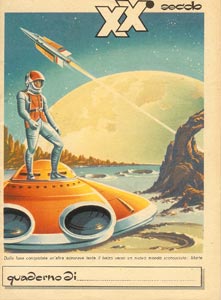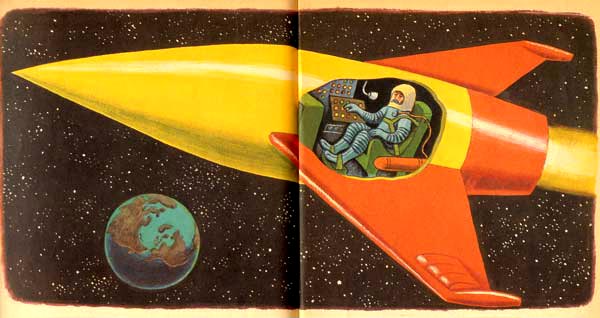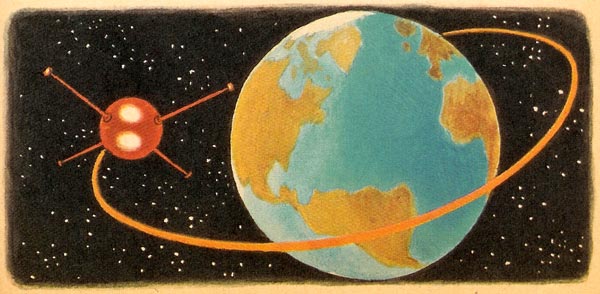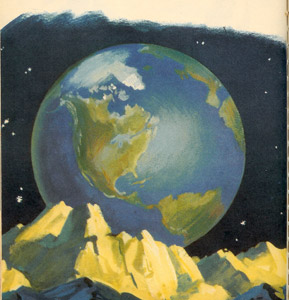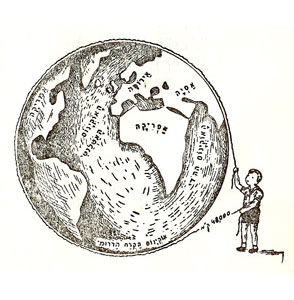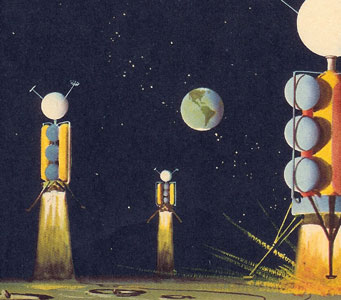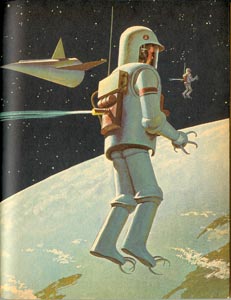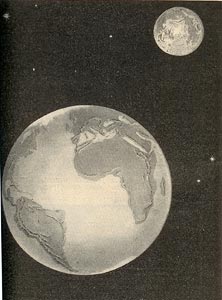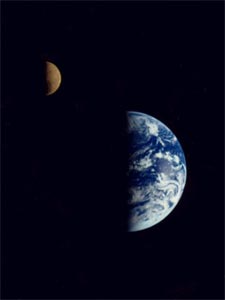 |
|
|
|

|

|
Small Blue Planet |
|
|
|
|
|
|
The Apollo mission that history
will remember is the eleventh: “One Small Step for man, one giant leap for
Mankind”. But a more significant leap for humanity happened, in my opinion, in an
earlier mission: Apollo 8, the first to leave Earth orbit in 1968
and go around our moon. It was from that mission that the astronauts
brought back, for the first time, photographs like the one at the right. In it, floating
serenely in a pitch-black sky, a small but vivid blue-white
half-globe: the image we all associate with our home world. Now we do, that is. Until 1968, the Earth looked quite different; or at any rate, its inhabitants thought it did. |
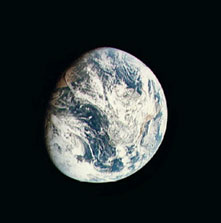 |
|
|
|
I got my first hint of this fact while
looking at an old school
copybook on display in a used book stall in the flea market of
Palermo, Italy. It, too, shows the earth as seen from the moon.
Behind the heroic astronaut on his nifty lunar roadster, framed
against a blue (!) lunar sky, we see a huge, dominating orb, green
continents outlined against a greenish-blue ocean, and not a cloud
in its sky. Later it occurred to me to check my collection of old children’s books, and the same image kept showing up: a green/brown/light blue planet, its familiar continents perfectly visible under a cloudless sky. Sometimes a few clouds are thrown in, but they are small, fleecy parallel streaks, isolated and insignificant. The most prominent feature of the earth as seen from space was missing: the massive white swirls of the global cloud formations we see daily during the weather report. And the fact that the night side of the Earth is invisible against the black of space was also lost on those artists -- despite the very visible example of our own moon’s phases. They all drew the Earth as an oversized terrestrial globe! |
|
|
|
Here, then, are some more examples of our planet as seen in pre-Apollo artist
renditions from around the world:
|
|
|
|
Home | HOC | Fractals | Miscellany | About | Contact Copyright © 2005 N. Zeldes. All rights reserved. |
|
